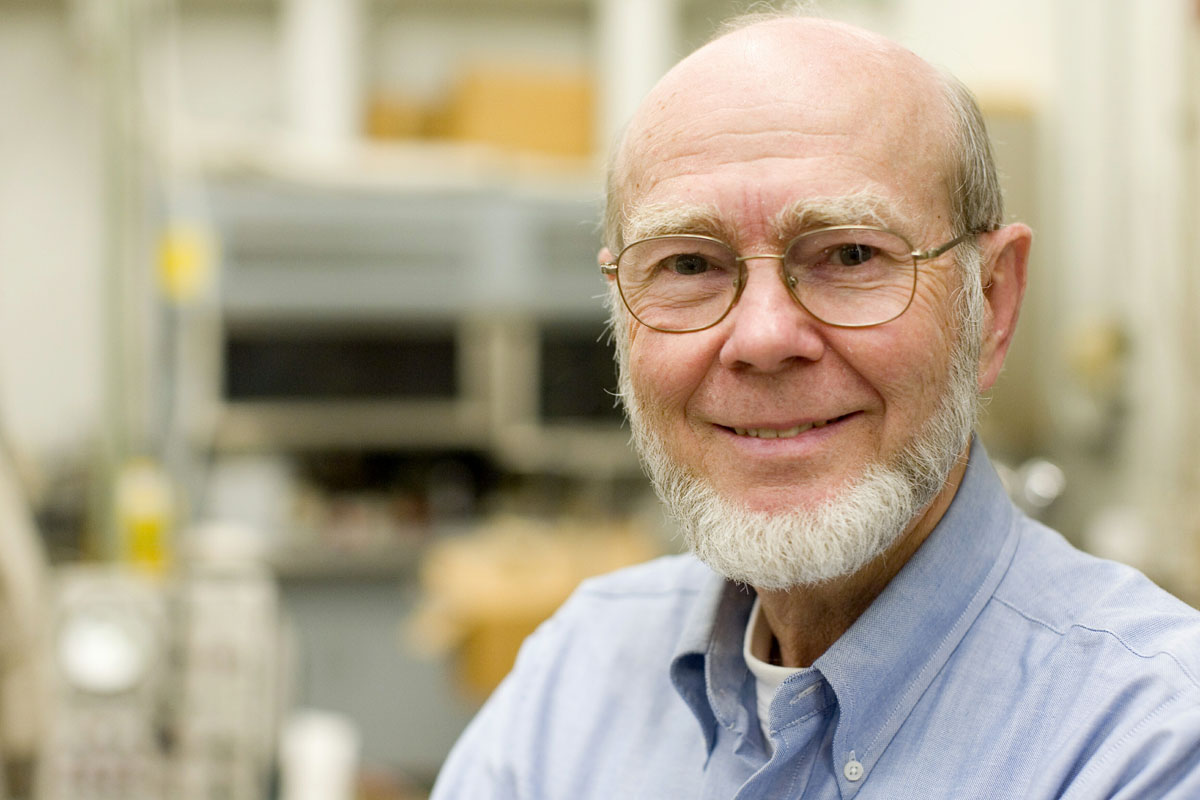Nov. 12, 2007 — Chemists at the University of Virginia have prepared the first uranium methylidyne molecule ever reported, despite the reactivity of uranium atoms with other molecules. This new molecule is a hydrocarbon containing a uranium-carbon triple-bond.
Their finding, which contributes to chemists’ fundamental understanding of uranium chemistry, is reported in the current issue of the Proceedings of the National Academy of Sciences.
“This is the first example of a triple bond between uranium and carbon in a hydrocarbon,” said Lester Andrews, the lead scientist and a professor of chemistry at the University of Virginia.
Andrews and members of his U.Va. laboratory have been working on uranium chemistry for 15 years with dozens of different molecules. For this finding they used a focused pulsed laser to evaporate depleted uranium in a vacuum chamber and reacted the vapor with fluoroform molecules, then trapped the new molecule in argon frozen at 8 K, near the absolute zero of temperature.
“The uranium atom went into a C-F bond and rearranged the other fluorines to make the new molecule with hydrogen-carbon {triple bond} uranium trifluoride, which is uranium trifluoride methylidyne,” Andrews said. It is this exotic triple bond between uranium and carbon that the researchers have characterized.
“After we did the infrared spectroscopy of the new molecule, we performed calculations to predict the structure and bonding properties of the molecule and compared the predicted vibrational spectrum with the one we observed,” Andrews said. “The agreement was good enough for us to conclude we had in fact made the molecule that we set out to make.”
Uranium exists in natural abundance in the ground in the form of ores. The material used by Andrews in his experiments is a relatively stable, long-lived isotope, which is U-238 and very little of U-235, the “hot” uranium isotope used for fuel and weapons.
“I think it’s imperative for people to know more about uranium chemistry, particularly our policy makers,” Andrews said. “People need to realize that you can’t just dig up a shovelful of uranium ore and make a bomb from it. One has to go through a considerable amount of chemical process to win uranium from its ore. You have to refine the ore into metal and enrich the material in the hot isotope before it has uses as a nuclear material. This is highly complicated chemistry.”
Andrews’s colleagues include Jonathan T. Lyon, a recent Ph.D. graduate from U.Va. who performed experiments and calculations, and Han-Shi Hu and Jun Li, chemists at Tsinghua University in Beijing who performed additional theoretical calculations to describe this new molecule.
Their finding, which contributes to chemists’ fundamental understanding of uranium chemistry, is reported in the current issue of the Proceedings of the National Academy of Sciences.
“This is the first example of a triple bond between uranium and carbon in a hydrocarbon,” said Lester Andrews, the lead scientist and a professor of chemistry at the University of Virginia.
Andrews and members of his U.Va. laboratory have been working on uranium chemistry for 15 years with dozens of different molecules. For this finding they used a focused pulsed laser to evaporate depleted uranium in a vacuum chamber and reacted the vapor with fluoroform molecules, then trapped the new molecule in argon frozen at 8 K, near the absolute zero of temperature.
“The uranium atom went into a C-F bond and rearranged the other fluorines to make the new molecule with hydrogen-carbon {triple bond} uranium trifluoride, which is uranium trifluoride methylidyne,” Andrews said. It is this exotic triple bond between uranium and carbon that the researchers have characterized.
“After we did the infrared spectroscopy of the new molecule, we performed calculations to predict the structure and bonding properties of the molecule and compared the predicted vibrational spectrum with the one we observed,” Andrews said. “The agreement was good enough for us to conclude we had in fact made the molecule that we set out to make.”
Uranium exists in natural abundance in the ground in the form of ores. The material used by Andrews in his experiments is a relatively stable, long-lived isotope, which is U-238 and very little of U-235, the “hot” uranium isotope used for fuel and weapons.
“I think it’s imperative for people to know more about uranium chemistry, particularly our policy makers,” Andrews said. “People need to realize that you can’t just dig up a shovelful of uranium ore and make a bomb from it. One has to go through a considerable amount of chemical process to win uranium from its ore. You have to refine the ore into metal and enrich the material in the hot isotope before it has uses as a nuclear material. This is highly complicated chemistry.”
Andrews’s colleagues include Jonathan T. Lyon, a recent Ph.D. graduate from U.Va. who performed experiments and calculations, and Han-Shi Hu and Jun Li, chemists at Tsinghua University in Beijing who performed additional theoretical calculations to describe this new molecule.
Media Contact
Article Information
November 12, 2007
/content/university-virginia-chemists-create-novel-uranium-molecule

